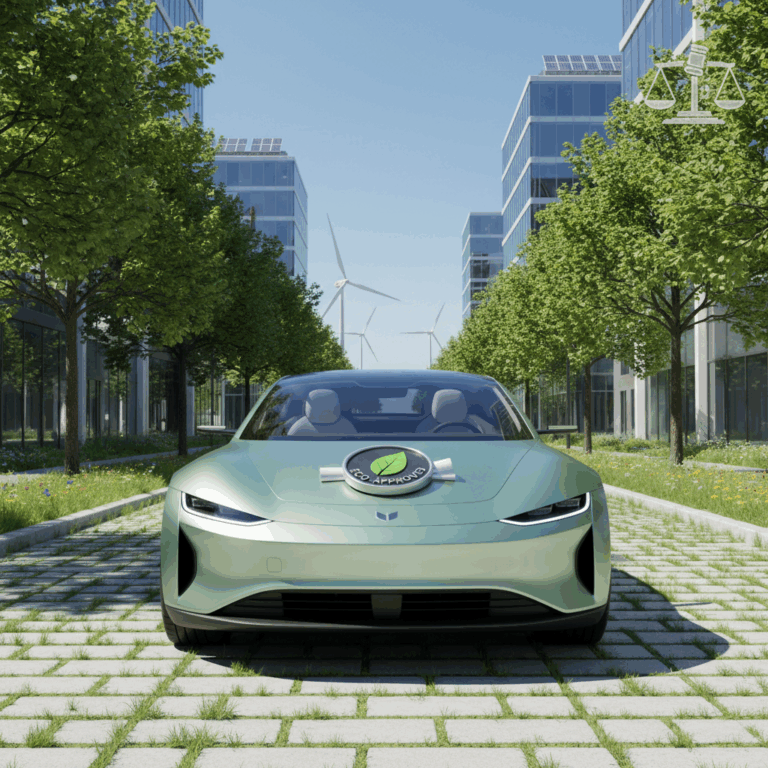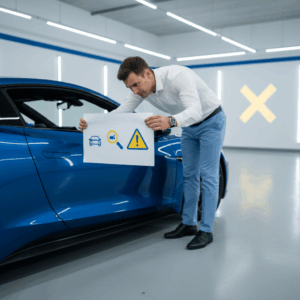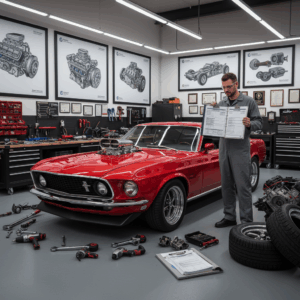Environmental Regulations Overview
Environmental regulations play a critical role in shaping the automotive industry. They encourage manufacturers to develop cleaner and more efficient technologies aimed at reducing pollution.
These regulations set strict limits on vehicle emissions, pushing the adoption of advanced propulsion systems and innovative solutions to meet environmental goals and improve air quality worldwide.
Compliance with these standards is essential for automakers to operate globally, as different regions impose varying levels of stringency to tackle climate change and public health issues.
Impact on Automotive Industry
Environmental regulations have had a profound impact on automotive development, leading to significant advancements in fuel efficiency and emissions control technology. Manufacturers must innovate constantly to comply.
In regions like the European Union, rules such as CAFE demand lower CO₂ emissions, which has accelerated the shift toward electric, hybrid, and hydrogen vehicles, transforming traditional car design and production.
The burden of compliance has increased costs, but it also drives competitiveness, pushing automakers to prioritize sustainability and eco-friendly technologies in their product lines.
Global Regulatory Frameworks
Global regulatory frameworks vary but share the common goal of reducing harmful emissions. The European Union’s regulations are among the strictest, setting ambitious CO₂ targets for new vehicles starting in 2025.
In the United States, the EPA enforces rigorous emissions standards, promoting cleaner technologies through regulations such as Tier standards, which govern exhaust pollutants from vehicles.
These frameworks create a complex regulatory environment where automakers must adapt products to meet diverse regional requirements, fostering innovation and raising environmental performance worldwide.
Emission Standards and Compliance
Emission standards set specific limits on pollutants released by vehicles to reduce environmental impact. Compliance ensures manufacturers produce cleaner cars, meeting legal requirements globally.
These standards promote technological advances and encourage the industry to shift towards more sustainable propulsion systems, improving air quality and contributing to climate goals.
European Union Emission Limits and CAFE
The European Union enforces strict emission limits, particularly through CAFE (Corporate Average Fuel Economy) regulations. These focus on reducing average CO₂ emissions across manufacturers’ fleets.
Starting in 2025, automakers must limit emissions to 93.6 grams of CO₂ per kilometer, effectively pushing the adoption of electric, hybrid, and hydrogen vehicles to meet targets.
This aggressive stance on emissions significantly influences vehicle design and powertrains, driving innovation while promoting sustainable transportation in Europe.
United States EPA Emission Regulations
The U.S. Environmental Protection Agency (EPA) enforces emissions standards to limit pollutants from vehicles, improving air quality and public health. These regulations are periodically updated to reflect stricter limits.
EPA standards include limits on nitrogen oxides, particulate matter, and greenhouse gases. Compliance encourages development of cleaner engines and exhaust after-treatment technologies.
Manufacturers face challenges adapting vehicles to meet diverse state and federal requirements, which also accelerates the adoption of alternative fuel and hybrid technologies in the U.S. market.
Euro and Tier Emission Standards
Euro standards in Europe and Tier standards in the U.S. regulate exhaust pollutants such as NOx, CO, and particulate matter to minimize air pollution. These frameworks have evolved over decades, becoming increasingly stringent.
Euro standards cover passenger cars and commercial vehicles, setting a global benchmark for emission controls. Tier standards focus on similar pollutants, adapted for U.S. environmental conditions.
Both standards drive continuous innovation in engine design, fuel injection systems, and catalytic converters, leading to significant emission reductions worldwide.
Technological Innovations Driven by Regulations
Environmental regulations have been a key catalyst for technological innovation in the automotive sector. They push manufacturers to develop advanced systems that lower emissions and improve efficiency.
These policies encourage the creation of cleaner, smarter vehicles by demanding continuous improvement in emission control technologies and alternative propulsion methods.
Innovation driven by regulations not only addresses environmental concerns but also opens new market opportunities for sustainable vehicle technologies worldwide.
Advancements in Vehicle Emission Technologies
Regulations have spurred significant advancements like electronic fuel injection, which optimizes fuel delivery for better combustion and reduced emissions. This technology improves engine efficiency dramatically.
Catalytic converters became widely adopted due to emission limits, transforming harmful exhaust gases into less toxic substances, thus cutting pollutants like carbon monoxide and nitrogen oxides.
Additionally, onboard diagnostics and advanced sensors help monitor emission levels in real time, ensuring compliance and enabling manufacturers to refine engine management systems effectively.
Electric, Hybrid, and Hydrogen Propulsion Systems
The push for lower emissions has accelerated development of electric vehicles (EVs), which produce zero tailpipe emissions and lower overall environmental impact when powered by clean energy.
Hybrid systems combine internal combustion engines with electric motors, improving fuel economy and reducing pollutants, thus easing the transition from traditional vehicles to fully electric.
Hydrogen fuel cell technology offers promise as a clean propulsion alternative, emitting only water vapor. Regulations supporting these systems drive investment and infrastructure growth globally.
Challenges and Outcomes of Environmental Laws
Environmental laws impose significant challenges on the automotive industry, especially regarding increased production costs and complex compliance processes.
Manufacturers must invest heavily in new technologies and adapt production lines, which can strain resources but often leads to more sustainable and innovative vehicle designs.
Cost and Production Adaptations
Compliance with environmental regulations requires automakers to adopt advanced technologies, increasing production costs due to research, development, and updated manufacturing processes.
These higher costs often lead to adjustments in supply chains and production schedules to meet regulatory deadlines while balancing market demands and profitability.
Despite the financial burden, these adaptations enable companies to enhance product offerings, improve fuel efficiency, and reduce emissions, gaining competitiveness in environmentally conscious markets.
Automakers must also customize vehicles to comply with varied regulations across countries, complicating logistics and increasing overall production complexity significantly.
Promotion of Sustainability in Automotive Industry
Environmental laws have effectively promoted sustainability, encouraging the industry to pursue cleaner energy sources such as electric, hybrid, and hydrogen propulsion systems.
This regulatory pressure fosters innovation, leading to breakthroughs in battery technologies, lightweight materials, and alternative fuels that reduce the automotive sector’s environmental footprint.
Such laws also raise consumer awareness, driving demand for greener vehicles and pushing manufacturers to prioritize sustainability in future product development.
Long-Term Industry Transformation
The industry’s gradual shift toward sustainability driven by these laws is expected to create long-lasting benefits, including reduced emissions, improved air quality, and lower dependence on fossil fuels.
Overall, environmental regulations serve as a catalyst, balancing economic challenges with environmental gains to reshape automotive manufacturing globally.







